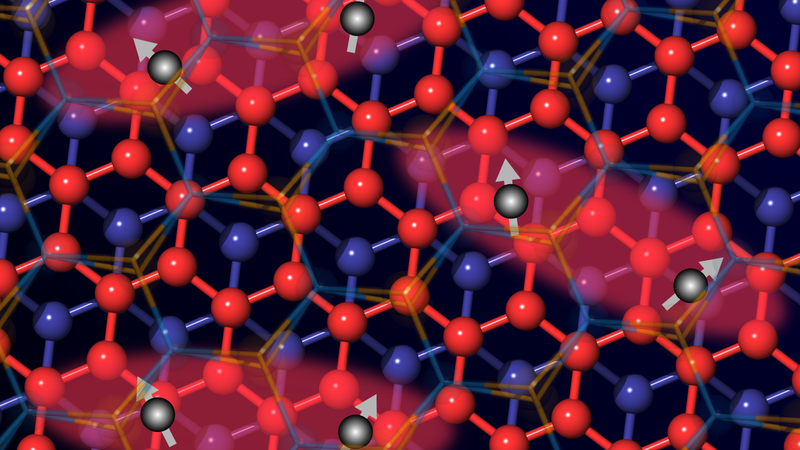Boosting Superconductivity in Graphene Bilayers
Nearly a decade ago, researchers heralded the discovery of a new wonder class of ultrathin materials with special optical and electrical properties that made it a potential rival for graphene, a form of carbon discovered in 2004 whose own special properties interest both scientists and engineers.

Now, Caltech engineers have shown that one of these wonder materials, tungsten diselenide, is not just a rival to graphene but also a complement to it. By adding tungsten diselenide to graphene, they have managed to enhance the graphene's electrical properties in ways that enrich our understanding of superconductivity and pave the way for engineering more robust and highly tunable graphene-based superconductors.
To understand what the researchers have accomplished, it is helpful to first know what graphene is and why its properties make it useful.
Graphene is a form of carbon consisting of a single layer of atoms arranged in a honeycomb-like lattice pattern that looks like chicken wire. When two or more of these sheets are stacked on top of each other, the resulting material can exhibit vastly different electronic properties depending on the alignment of those sheets in relation to one another.
For instance, when the second sheet of graphene is "twisted" by just 1.05 degrees (a value known as the "magic angle") in relation to the sheet it is laid on top of, the resulting stack can be either a superconductor that conducts electricity with absolutely no resistance whatsoever or an insulator that completely blocks the passage of electricity. All that is needed to switch between these vastly different states is the application of an external electrical field.
Surprisingly, research conducted in 2022 shows that even untwisted graphene bilayers can exhibit superconductivity. Untwisted bilayers of graphene are easier to fabricate in bulk than their twisted counterparts, but the superconductive state in these untwisted bilayers is more delicate, harder to tune, and only occurs at temperatures that are about a hundred times lower than in twisted structures (such temperatures typically can only be achieved through the use of liquid helium). New research at Caltech shows a way to significantly improve upon this fragile superconductivity with tungsten diselenide.
In this new work, which was published in the journal Nature on January 11, Stevan Nadj-Perge, assistant professor of applied physics and materials science, and his colleagues discovered that when tungsten diselenide is placed on top of graphene bilayers, the untwisted graphene's superconductivity is greatly improved. Notably, the superconducting critical temperature—that is, the warmest temperature at which the material can superconduct—is enhanced by a factor of 10. By being in close proximity to graphene, tungsten diselenide bestows the benefits of the "magic angle" twist to the more mass-producible untwisted graphene. This finding provides new insight into the nature of superconductivity and suggests strategies for enhancing superconductivity in other related graphene-based materials.
"These graphene bilayer devices are remarkably tunable," says Nadj-Perge, corresponding author of the new work. "For example, by applying electric fields, we can add or remove electrons from the bilayer as well as push them toward and away from tungsten diselenide. This allowed us to carefully study the enhancement of superconductivity in the system."
"The high level of tunability opens up possibilities for future applications," Nadj-Perge continues. "One of the main advantages of untwisted graphene superconductors compared to their twisted counterparts is that they are much cleaner in terms of disorder and defects, and technically much easier to fabricate. That implies these structures may be more suited for applications where one would need to make many identical copies of the same device architecture."
The paper is titled "Enhanced superconductivity in spin-orbit proximitized bilayer graphene." Co-authors include Jason Alicea, William K. Davis Professor of Theoretical Physics; Caltech graduate students Yiran Zhang, lead author, and Robert Polski (PhD '22); Alex Thomson former Caltech postdoc, now assistant professor at UC Davis; Étienne Lantagne Hurtubise, Moore Postdoctoral Scholar Research Associate in Theoretical Physics at Caltech; Cyprian Lewandowski, former Caltech postdoc, now assistant professor at Florida State University; Haoxin Zhou, postdoctoral scholar research associate in applied physics and materials science; and Kenji Watanabe and Takashi Taniguchi of the National Institute for Materials Science in Japan.